我們不能只依賴混凝土管道和蓄水池來(lái)解決,而是學(xué)會(huì)設(shè)計(jì)結(jié)合自然��。
鄭州發(fā)生千年一遇的大暴雨后�,部分美國(guó)媒體刊文質(zhì)疑中國(guó)的海綿城市理念是否能妥善處理城市雨洪。近日�,美國(guó)景觀設(shè)計(jì)師協(xié)會(huì)(ASLA)旗下的博客“THE DIRT”就這些問(wèn)題采訪了俞孔堅(jiān)博士,并于8月4日發(fā)布文章�,詳細(xì)記錄了俞孔堅(jiān)對(duì)這些質(zhì)疑的回應(yīng),以及對(duì)海綿城市發(fā)展前景的展望����。
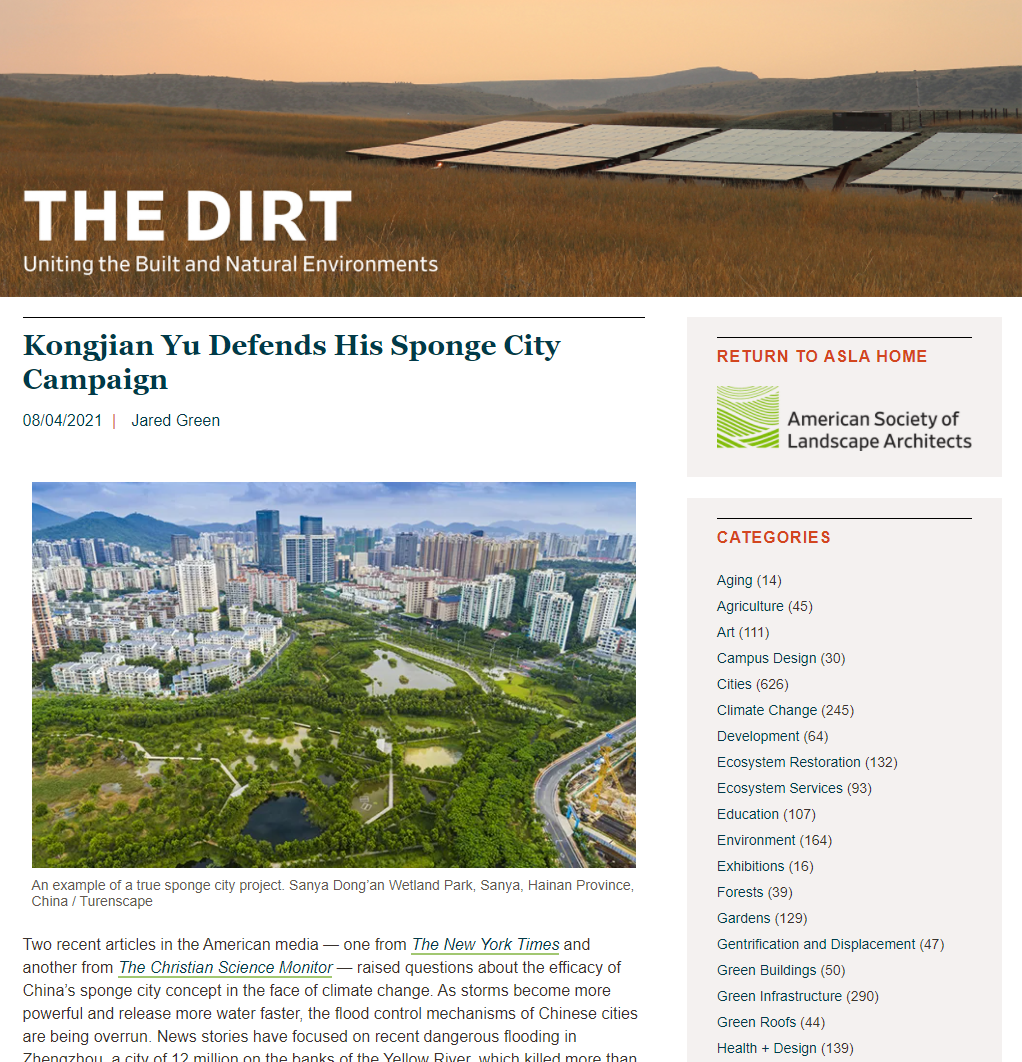
原文鏈接:
https://dirt.asla.org/2021/08/04/kongjian-yu-defends-his-sponge-city-campaign/
俞孔堅(jiān)捍衛(wèi)海綿城市理念
Kongjian Yu Defends His Sponge City Campaign
作者:Jared Green
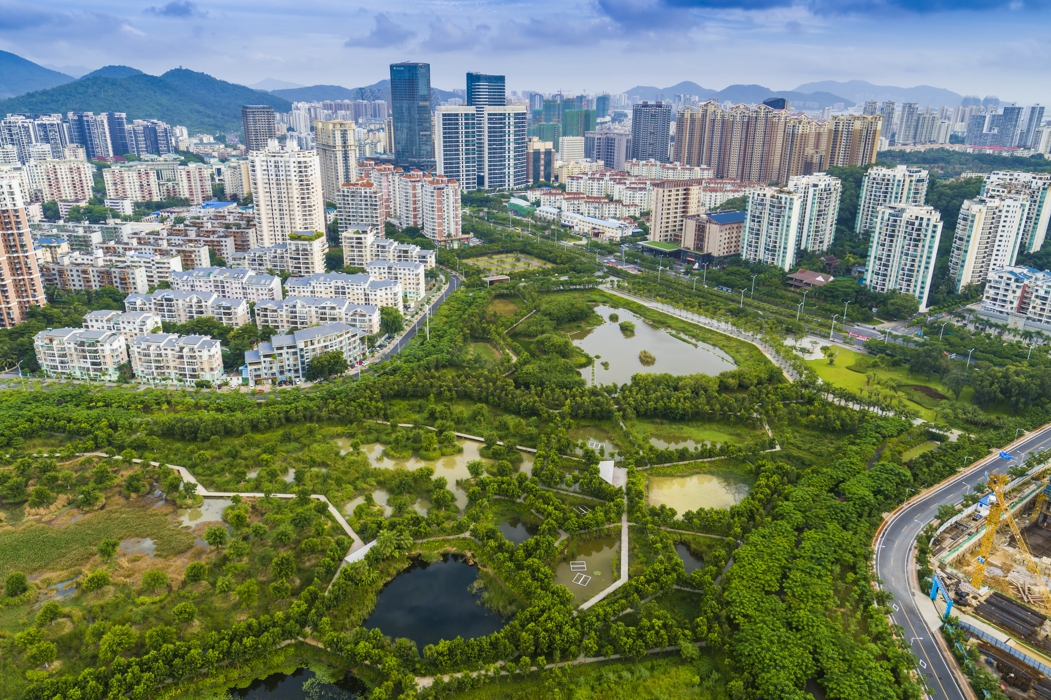
▲完整的海綿城市案例——三亞?wèn)|岸濕地公園���,中國(guó)海南省三亞市/土人設(shè)計(jì)
近期《紐約時(shí)報(bào)》和《基督科學(xué)箴言報(bào)》兩家美國(guó)媒體均刊登文章,質(zhì)疑中國(guó)的海綿城市理論在應(yīng)對(duì)氣候變化問(wèn)題上的有效性�����。目前愈加頻繁的暴雨和大量的瞬時(shí)排水正在沖擊著中國(guó)城市的防洪機(jī)制��,其中�����,鄭州是當(dāng)下新聞報(bào)道的焦點(diǎn)����。這座位于黃河沿岸的城市擁有1200萬(wàn)人口���,卻面臨著一次災(zāi)難性洪水���,造成300多人死亡,大量人員被困于隧道和地鐵內(nèi)�。為此����,這兩篇文章質(zhì)疑海綿城市這種基于自然的解決方案能否應(yīng)對(duì)在中國(guó)季風(fēng)性城市中日益泛濫的雨洪����。
美國(guó)景觀設(shè)計(jì)師協(xié)會(huì)FALSA會(huì)士俞孔堅(jiān)是海綿城市理論的先行者,也是中國(guó)最大的景觀設(shè)計(jì)公司之一“土人設(shè)計(jì)”的創(chuàng)始人����。他在通過(guò)Zoom接受視頻采訪時(shí)回應(yīng)道:“首先,鄭州并未完成真正的海綿城市建設(shè)�,她仍然有太多的硬質(zhì)開(kāi)發(fā)和灰色基礎(chǔ)設(shè)施。”鑒于中央政府對(duì)海綿城市的大力支持�����,許多中國(guó)城市一直將“海綿城市”一詞作為政治口號(hào)和吸引中央政府資金的一種途徑��。
他認(rèn)為在城市范圍內(nèi)設(shè)計(jì)和建造坑塘���、濕地和公園系統(tǒng)以留住雨水的海綿城市理念已經(jīng)被證明是有效的���。“中國(guó)黃泛區(qū)受季風(fēng)氣候影響的城市自古以來(lái)就利用坑塘等基于自然的設(shè)施來(lái)管理雨洪���。我們可以證明該方法在2000多年里都是有效的�,因?yàn)檫@些城市生存了下來(lái)。”
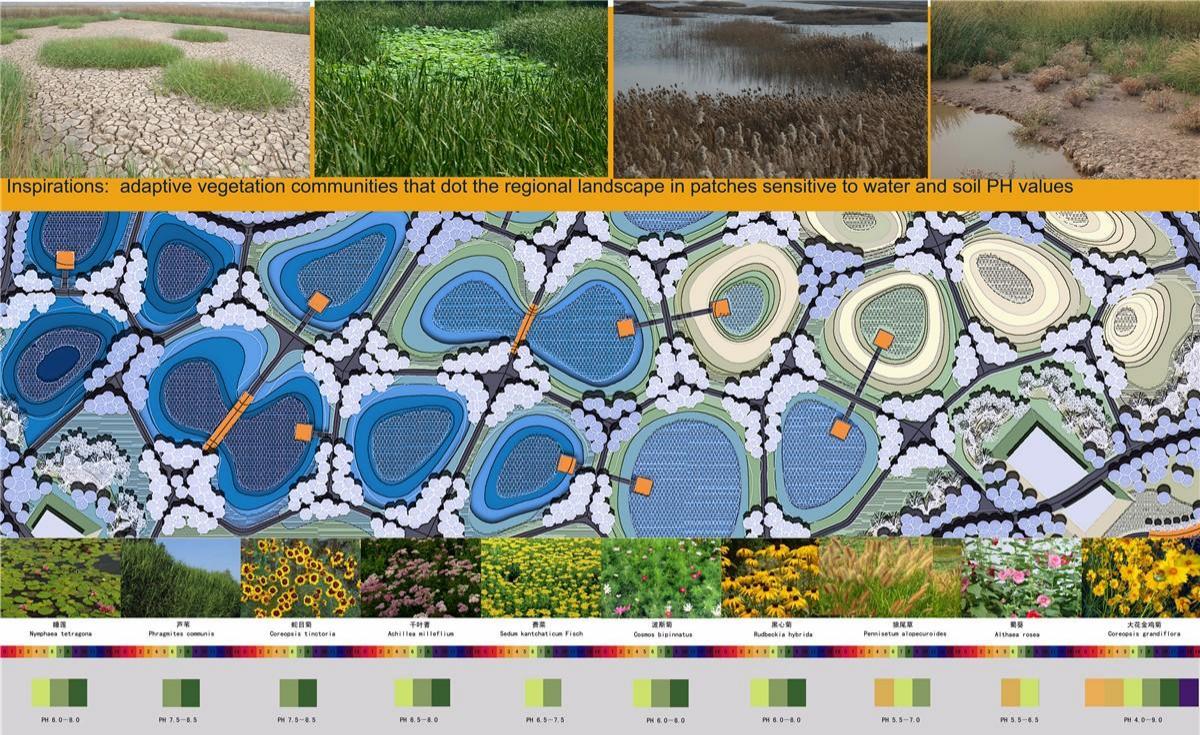
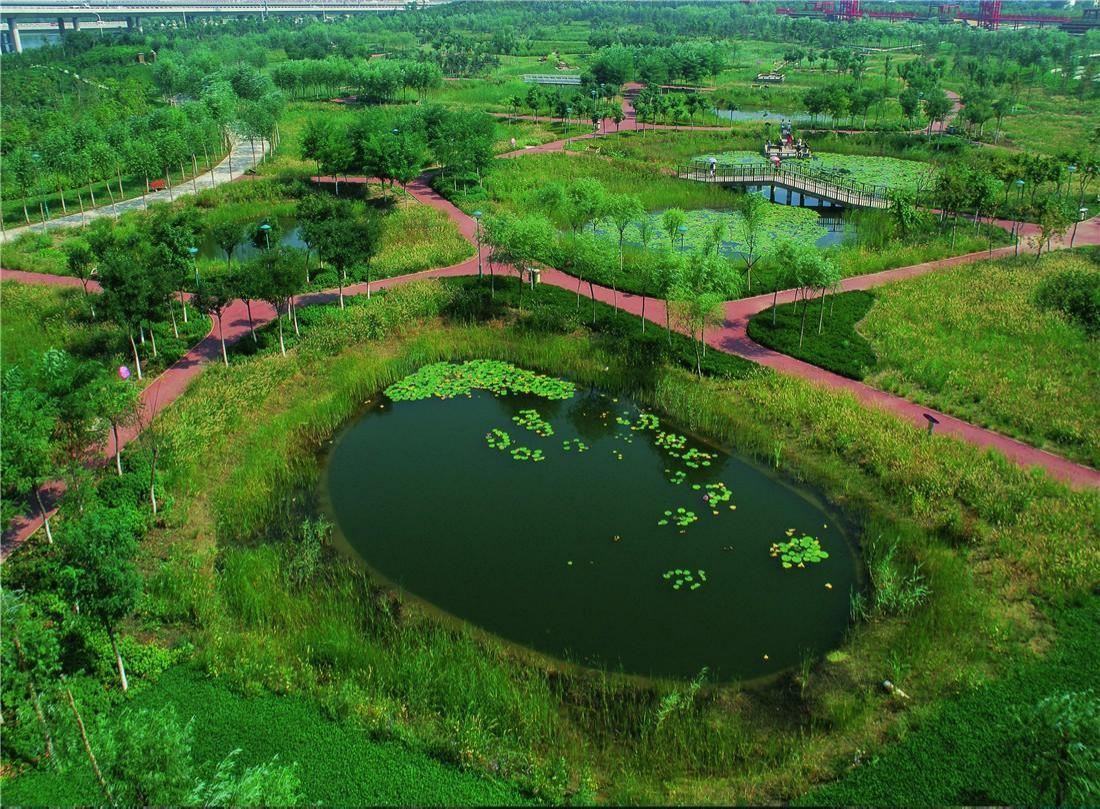
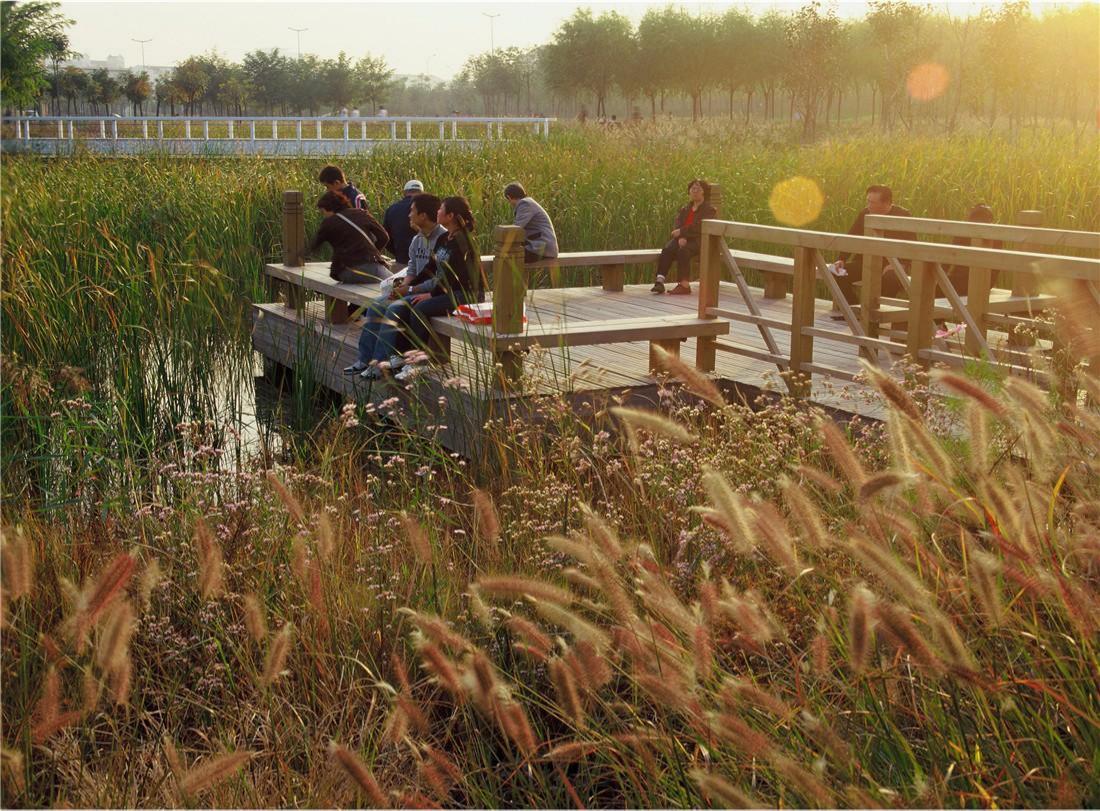
▲2010ASLA專業(yè)獎(jiǎng)綜合設(shè)計(jì)類榮譽(yù)獎(jiǎng)——適應(yīng)性調(diào)色板:天津橋園�����。中國(guó)天津/土人設(shè)計(jì)
如今在中國(guó)��,城市開(kāi)發(fā)要求保證至少30%以上的公共綠地��,小區(qū)至少有30%的社區(qū)綠地�����。對(duì)于俞孔堅(jiān)而言�����,這意味著城市有足夠的空間來(lái)建造可容納大量雨水的坑塘和公園�����。他表示:“我們至少有40%左右的城市建設(shè)用地可用于綠色海綿建設(shè)��。如果布局合理均勻��,20-30%的綠色海綿足以解決城市內(nèi)澇災(zāi)害��。在中國(guó)我們常說(shuō)‘四水歸明堂��,財(cái)水不外流’��。我們完全有空間來(lái)儲(chǔ)存雨水�。”
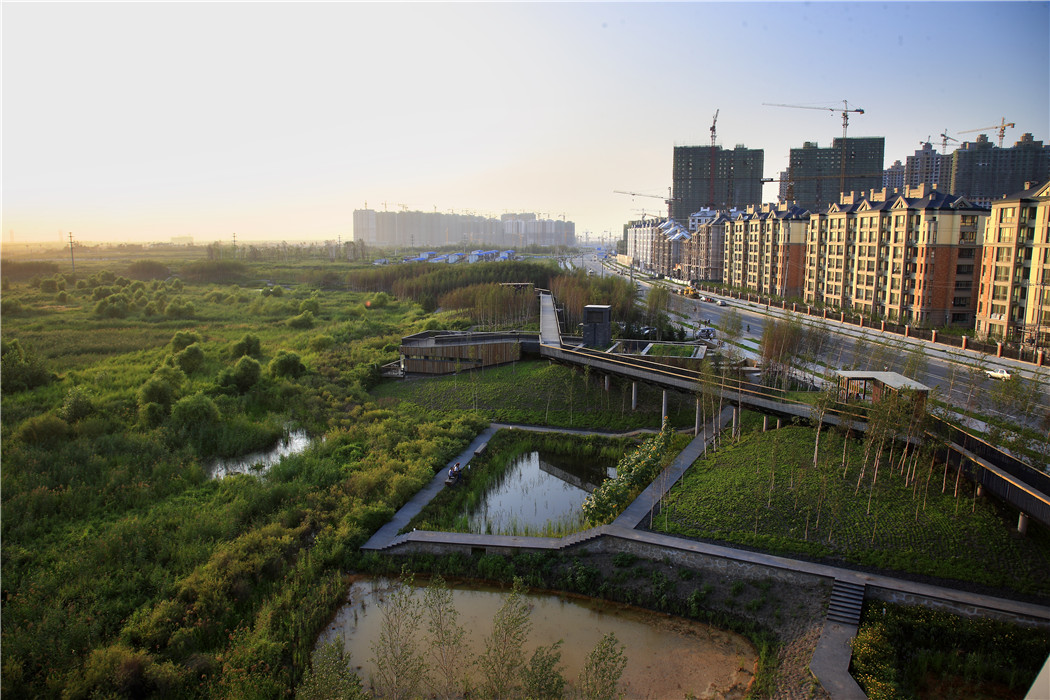
▲2012 ASLA專業(yè)獎(jiǎng)綜合設(shè)計(jì)類杰出獎(jiǎng)——水韌性城市中的綠色海綿:群力雨洪公園�。中國(guó)黑龍江省哈爾濱市/土人設(shè)計(jì)
俞孔堅(jiān)簡(jiǎn)要介紹了海綿城市理論的關(guān)鍵點(diǎn)。綠色基礎(chǔ)設(shè)施應(yīng)從雨水的源頭�����,即降落時(shí)的雨水開(kāi)始收集���?��!昂>d”設(shè)施應(yīng)分布均勻,并利用它們的滲透性來(lái)吸收雨水����,而不是將水轉(zhuǎn)移到其它地方。“如果設(shè)計(jì)得當(dāng)�,這就是一個(gè)基于本地解決方案的水資源管理系統(tǒng)?�!?/p>
對(duì)于鄭州的新聞報(bào)道�����,他指出:“媒體是在尋求矛盾點(diǎn)�,瞄準(zhǔn)了一些并非‘海綿’的部分。海綿城市理論只會(huì)幫助我們解決問(wèn)題�����,因此我們需要更多的‘海綿’�,而不是更少。”
盡管最近一段他的演講視頻在中國(guó)已經(jīng)有超過(guò)1億人次觀看���,但他認(rèn)為關(guān)于海綿城市的益處仍需要更好地向公眾普及��?�!耙恍┤瞬焕斫夂>d城市的理念����,有的甚至覺(jué)得這是浪費(fèi)錢。此外��,中國(guó)的部分工程專業(yè)人員一直在抵制這種基于自然的海綿城市方法���,因?yàn)檫@取代了他們的工作?�!?/p>
如果海綿城市按照它應(yīng)有的方式運(yùn)作����,“就不會(huì)再有洪水。當(dāng)洪水不再帶來(lái)災(zāi)難時(shí)��,人們也就不再需要記住它��?���!?nbsp;
當(dāng)被問(wèn)及紐約市通過(guò)建設(shè)海堤和大規(guī)模蓄水池等措施,避免海平面上升引發(fā)曼哈頓下城洪水時(shí)��,他評(píng)價(jià)稱:“蓄水池是不可持續(xù)的�����。”混凝土水箱“必須十分龐大�����,因此會(huì)非常昂貴�,也會(huì)產(chǎn)生極高的維護(hù)費(fèi)用?���!贝送猓@種方法是在浪費(fèi)水�����。水是一種“生命資源��,而且當(dāng)它與植物和土壤結(jié)合時(shí)還能帶來(lái)更多的自然資產(chǎn)���?��!?nbsp;
俞孔堅(jiān)呼吁在中國(guó)和全球的景觀設(shè)計(jì)和土木工程行業(yè)中推廣海綿城市的建設(shè)理念。“中國(guó)的問(wèn)題在于�,一些城市開(kāi)放空間并不能滿足雨洪管理的需求?�!倍?strong>雨洪管理在中國(guó)仍然被理解成是市政和水利工程的范疇。
為了解決海綿城市的設(shè)計(jì)和實(shí)施問(wèn)題����,俞孔堅(jiān)將計(jì)劃倡導(dǎo)一場(chǎng)跨學(xué)科的峰會(huì)?����!斑@將會(huì)是一次旨在彌合分歧的高層磋商�?!?/p>
此外,俞孔堅(jiān)的團(tuán)隊(duì)即將出版的中文新書《設(shè)計(jì)生態(tài)的績(jī)效研究》中�,將提供海綿城市項(xiàng)目的真實(shí)數(shù)據(jù)。除了視頻資料外�����,他還為中國(guó)數(shù)以千計(jì)參與海綿城市建設(shè)的市長(zhǎng)提供了參考書����。
“在氣候變化的時(shí)代,洪水問(wèn)題為景觀設(shè)計(jì)師提供了建立行業(yè)解決方案的機(jī)會(huì)��。我們不能只依賴混凝土管道和蓄水池來(lái)解決��,而是學(xué)會(huì)設(shè)計(jì)結(jié)合自然?!?/strong>

▲2020 ASLA專業(yè)獎(jiǎng)通用設(shè)計(jì)類榮譽(yù)獎(jiǎng)——設(shè)計(jì)自然的深邃之形:三亞紅樹林公園。中國(guó)海南省三亞市/土人設(shè)計(jì)
Kongjian Yu Defends His Sponge City Campaign
Jared Green, 0804/2021
Two recent articles in the American media — one from The New York Times and another from The Christian Science Monitor — raised questions about the efficacy of China’s sponge city concept in the face of climate change. As storms become more powerful and release more water faster, the flood control mechanisms of Chinese cities are being overrun. News stories have focused on recent dangerous flooding in Zhengzhou, a city of 12 million on the banks of the Yellow River, which killed more than 300 people and trapped others in tunnels and subways. The articles questioned whether nature-based solutions, rooted in the sponge city approach, can handle the increasing amounts of stormwater inundating Chinese cities on rivers and coasts.
In a Zoom interview, Kongjian Yu, FASLA — founder of Turenscape, one of China’s largest landscape architecture firms, and creator of the sponge city concept — said, “first of all, Zhengzhou is not a true sponge city. There has still been way too much development and grey infrastructure.” And many Chinese cities have been using the term “sponge city as a political slogan” and a way to attract central government funding, given the deep support for the approach from Chinese president Xi Jinping.
He believes the benefits of the sponge city approach, which involves designing and constructing city-wide systems of ponds, wetlands, and parks that retain stormwater, have been proven. “Since ancient times, Chinese cities along the Yellow River with monsoon climates have used ponds to manage flooding and stormwater. So we know these approaches worked for over 2,000 years because these cities survived.”
Chinese cities today are required to maintain 30 percent of the city as green space. Another 30 percent is dedicated to community space. For Yu, this means there is more enough space to create more ponds and water-absorbing parks that can capture vast amounts of water. “In 60 percent of the land in cities, we can use nature to retain water so it doesn’t drain away. In China, we have a saying — ‘water is precious, don’t let it go.’ There is plenty of space to be used to retain water.”
Yu outlined the key components of the sponge city approach. Stormwater should be captured using green infrastructure at its source, where it falls. Sponges should be evenly distributed and permeable so they can absorb water instead of shifting it somewhere else. “If properly designed, it’s a democratic water management system” made up of very local solutions.
Yu claims that with the story of Zhengzhou, the “media is seeking conflict and targeting something that isn’t a sponge city. Sponge cities can only solve the problem. We need more sponges, not less.”
Despite a recent video of a talk he gave, which he says has been viewed by more than 100 million Chinese citizens, there still needs to be more public education about the benefits of sponge cities. “Some of the public still doesn’t understand the sponge city concept, and some may find it a waste of money. Furthermore, some civil and hydrological engineers in China have been attacking the sponge city, nature-based approach because it takes away their jobs.”
If a sponge city is working as it should, “there would be no flooding. People forget when they don’t have disasters.”
When asked about NYC’s new approach to handling sea level rise-induced flooding in lower Manhattan, which will involve constructing a sea wall along with large-scale cisterns to store water, he said: “cisterns are unsustainable.” The concrete cisterns “have to be huge and therefore expensive and high maintenance.” Furthermore, this approach wastes water, which is a “l(fā)iving resources and when combined with plants and soils creates more natural resources.”
Yu calls for greater capacity building among the landscape architecture and civil engineering professions in China and elsewhere in the sponge city concept. “The issue in China is that some designers and engineers are building parks but not building in the stormwater management capacity needed.” In China, stormwater is still the responsibility of civil and hydrological engineers.
To address issues with the design and implementation of sponge cities, Yu will be hosting a summit with the leadership of the civil and hydrological engineers at his research and educational campus. “We will have a high-level discussion aimed to bridge the gaps.”
Furthermore, Yu’s team is publishing a new book in Mandarin — Performance Study of Designed Ecologies — that includes real data about sponge city projects. In addition to his videos, he has also produced a textbook for China’s thousands of mayors, who he said are on board with the approach.
“Flooding in the era of climate change presents an opportunity for landscape architects. We have an opportunity to build up our approach. Landscape architects can solve these problems — not with concrete pipes and cisterns — but with nature.”
翻譯:申瑞琪
版權(quán)聲明:本文版權(quán)歸原作者所有�����,請(qǐng)勿以景觀中國(guó)編輯版本轉(zhuǎn)載���。如有侵犯您的權(quán)益請(qǐng)及時(shí)聯(lián)系����,我們將第一時(shí)間刪除��。
投稿郵箱:info@landscape.cn
項(xiàng)目咨詢:18510568018(微信同號(hào))

 京公海網(wǎng)安備 110108000058號(hào)
京公海網(wǎng)安備 110108000058號(hào)
















